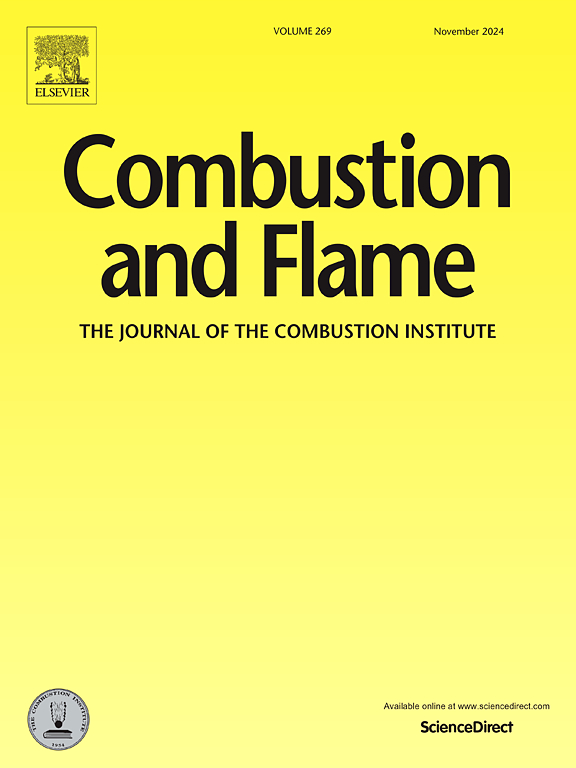EM-HyChem: Bridging molecular simulations and chemical reaction neural network-enabled approach to modelling energetic material chemistry
IF 5.8
2区 工程技术
Q2 ENERGY & FUELS
引用次数: 0
Abstract
This study introduced a physics-inspired, top-down approach for modelling the reaction kinetics of energetic materials, based on observations of the time scale separation between pyrolysis and oxidation reactions. This modelling approach, named EM-HyChem, was developed with the inspiration of the original hybrid chemistry (HyChem) model, in which the reaction mechanism is divided into two submodels: pyrolysis and oxidation. In EM-HyChem, the key pyrolysis products and reaction mechanism are identified from the perspective of molecular fragments via geometry analysis, which is validated via neural network potential-enabled molecular dynamic simulations. A chemical reaction neural network (CRNN) model is applied to extract the rate parameters for the pyrolysis step from the reproduction of thermogravimetric experiments. An EM-HyChem model is later constructed by combining the pyrolysis step together with the oxidation models for the pyrolysis products. Two representative EMs, i.e., 1,3,5-trinitroperhydro-1,3,5-triazine (RDX) and 1,3,5,7-tetranitro-1,3,5,7-tetrazocane (HMX), are considered here to evaluate the performance of the EM-HyChem model. The predicted burning rates across a wide range of pressure conditions (1–100 atm) are in good agreement with the experimental measurements and the results of other models. Further agreement among the temperature profile, melt layer thickness and surface temperatures support the EM-HyChem model.
求助全文
约1分钟内获得全文
求助全文
来源期刊

Combustion and Flame
工程技术-工程:化工
CiteScore
9.50
自引率
20.50%
发文量
631
审稿时长
3.8 months
期刊介绍:
The mission of the journal is to publish high quality work from experimental, theoretical, and computational investigations on the fundamentals of combustion phenomena and closely allied matters. While submissions in all pertinent areas are welcomed, past and recent focus of the journal has been on:
Development and validation of reaction kinetics, reduction of reaction mechanisms and modeling of combustion systems, including:
Conventional, alternative and surrogate fuels;
Pollutants;
Particulate and aerosol formation and abatement;
Heterogeneous processes.
Experimental, theoretical, and computational studies of laminar and turbulent combustion phenomena, including:
Premixed and non-premixed flames;
Ignition and extinction phenomena;
Flame propagation;
Flame structure;
Instabilities and swirl;
Flame spread;
Multi-phase reactants.
Advances in diagnostic and computational methods in combustion, including:
Measurement and simulation of scalar and vector properties;
Novel techniques;
State-of-the art applications.
Fundamental investigations of combustion technologies and systems, including:
Internal combustion engines;
Gas turbines;
Small- and large-scale stationary combustion and power generation;
Catalytic combustion;
Combustion synthesis;
Combustion under extreme conditions;
New concepts.
 求助内容:
求助内容: 应助结果提醒方式:
应助结果提醒方式:


